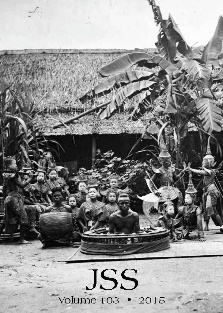Rajadhiraj’s Rangoon Relics and a Mon Funerary Stupa
Main Article Content
Abstract
At the conclusion of the Second Anglo-Burmese War (1852-1853), derelict brick monuments were cleared to construct barracks at the foot of the hill capped by the Shwedagon Pagoda in Rangoon (Yangon). One stupa disclosed nine objects, the most important of which were three gold reliquaries, a band incised with a fifteen-line record in Pali and a bowl containing twenty-one bone fragments. The incised band can be attributed to the Mon king, Rajadhiraj (reigned c. 1384 – c. 1420), whose capital was ancient Hamsavati, or modern Pegu (Bago). As the sole inscription associated with this leading Mon ruler, the band marks a significant addition to less than a handful of surviving records from the 14th and early 15th centuries in Lower Burma (Myanmar). The Pali inscription recorded religious donations occasioned by the cremation of Rajadhiraj’s queen. The bone fragments within the bowl are likely the queen’s, suggesting that the stupa was a funerary monument. The three gold reliquaries were probably produced in Lower Burma but share affinities with Sri Lankan examples. Reliquaries imported from Sri Lanka, and from Eastern India, probably played an incalculable role in shaping designs of Southeast Asian reliquaries and also brick and stone stupas. This treasure-trove has been the subject of occasional notices, but a fresh examination is merited in view of its importance for understanding Mon civilization and funerary traditions in Southeast Asia during the 14th and 15th centuries.


